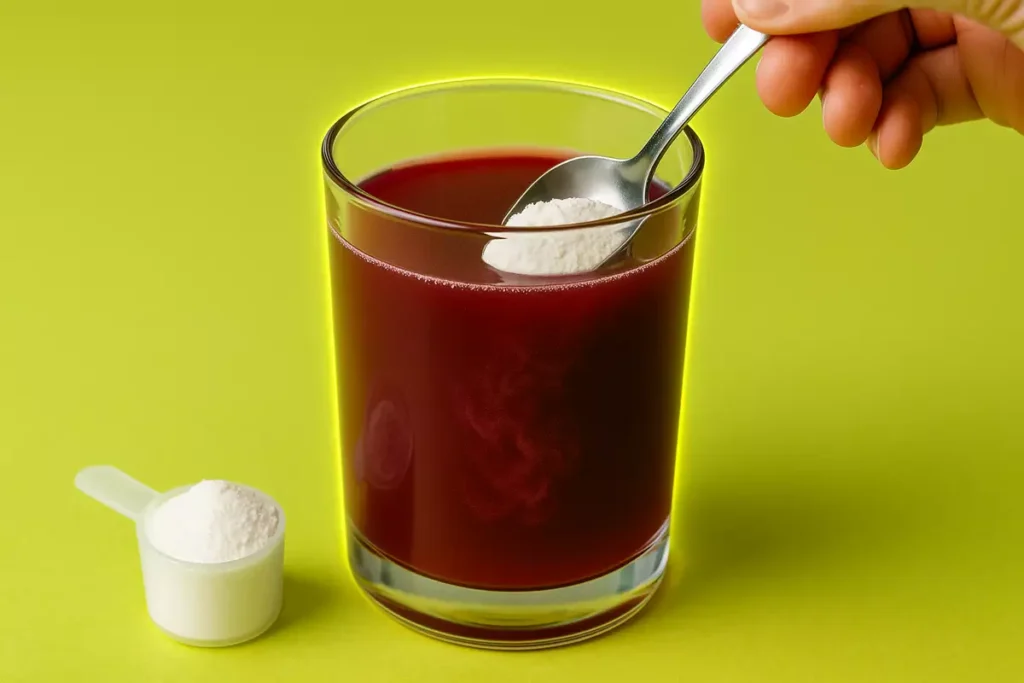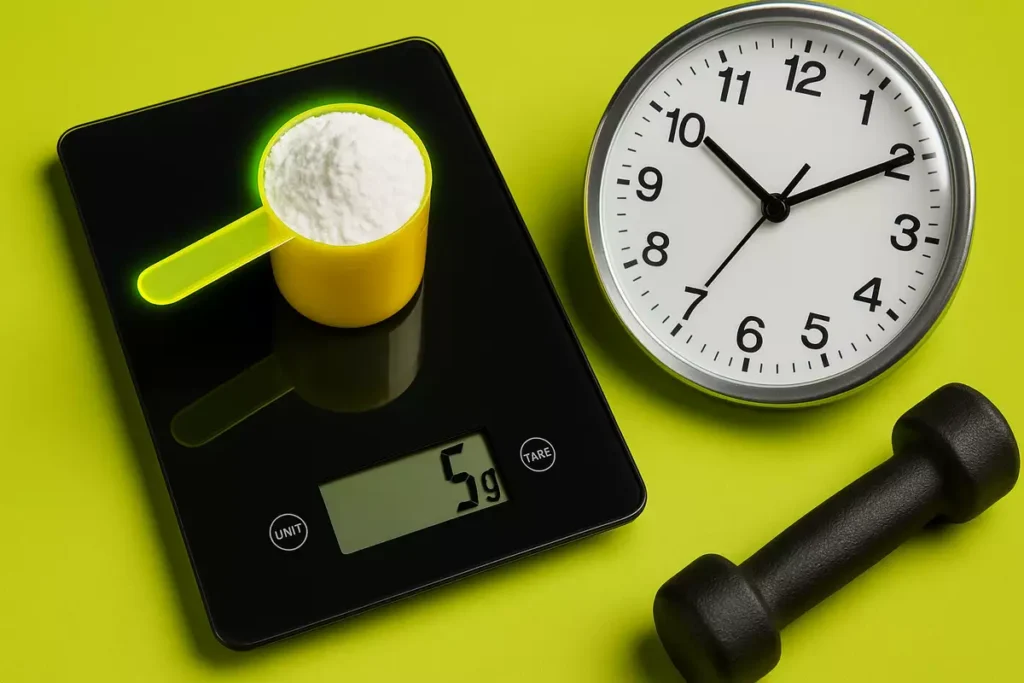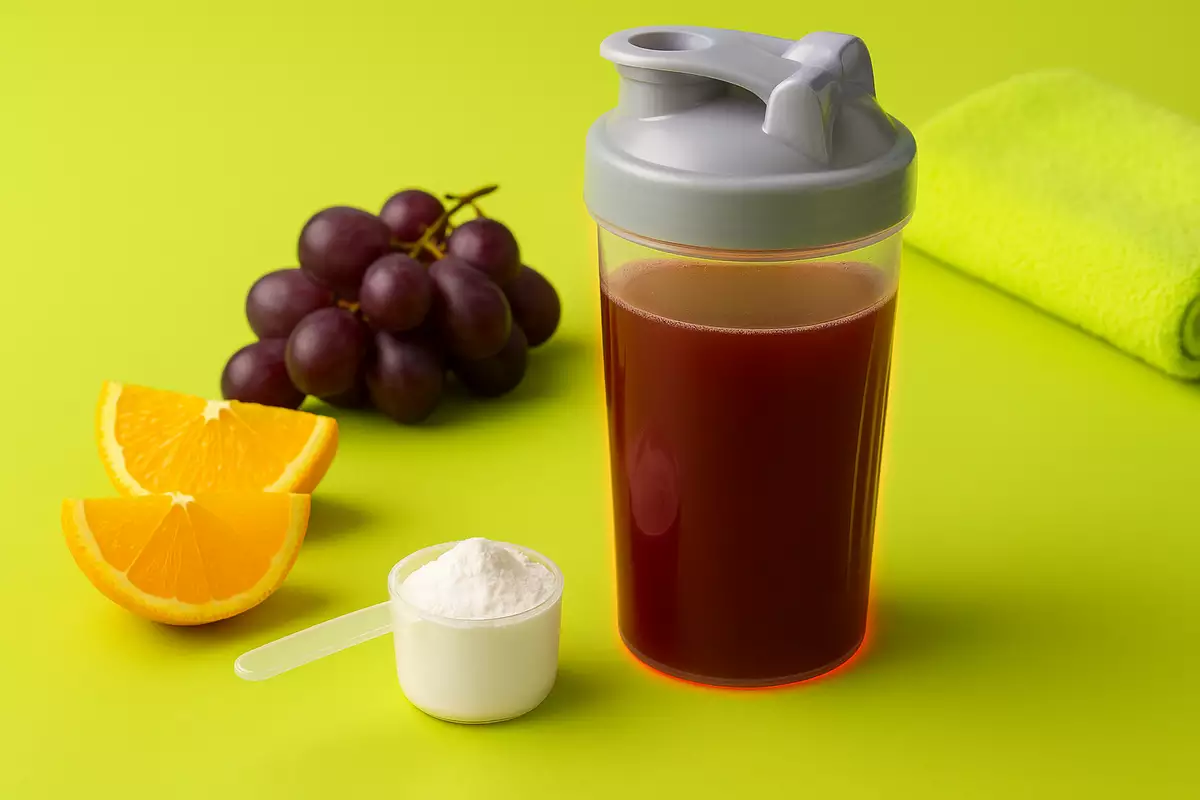Tired of gritty creatine that clumps in water or leaves a bad aftertaste? There’s a better way — and it’s sitting in your fridge.
Mixing creatine monohydrate with juice isn’t just about flavor. It can actually boost absorption, improve consistency, and help you see faster results.
In this article, I’ll show you exactly how to mix creatine with juice the right way — based on years of experience as a coach and lifter.
Whether you’re bulking, cutting, or just starting out, this practical guide will help you get more out of every scoop.
Table of contents
Can You Mix Creatine with Juice?

Absolutely, yes — you can mix creatine monohydrate with juice, and in many cases, it’s one of the best ways to take it.
I’ve been using creatine for over a decade, both personally and with my clients, and juice has consistently shown up as a great mixing option.
My go-to? Grape juice. It not only tastes great but also blends easily with creatine, especially when it’s at room temperature. Orange juice is a close second, and both are packed with natural sugars that actually help with creatine absorption.
If you’re still new to creatine, check out this breakdown of micronized vs. regular creatine — it might help you choose the best form to mix with your juice.
Why Juice May Boost Creatine Absorption
Juice isn’t just about flavor — it actually serves a purpose. When you consume juice, especially ones rich in simple carbs like grape or orange, your body produces a small insulin response.
That insulin helps shuttle nutrients, including creatine, into your muscles faster and more efficiently. Think of it like opening the gate a little wider.
I’ve seen this work first-hand. During one of my strength phases, I consistently took 5g of creatine with grape juice post-workout. My deadlift jumped by 12 kg over six weeks.
I felt less soreness and more muscle fullness. Was it just the juice? Maybe not entirely — but it made a clear difference for me.
If you want a full breakdown of how creatine delivers results over time, this article will guide you through the creatine monohydrate results timeline.
Best Way to Mix Creatine with Juice

Mixing creatine with juice is simple — but doing it right makes a difference.
Here’s my personal method:
- Use 200–250 ml of room-temperature juice (grape, orange, or cranberry work best)
- Add 5g of micronized creatine monohydrate
- Stir with a spoon or shake in a bottle for 10–15 seconds
- Drink it slowly post-workout
Room-temp juice helps prevent clumping, which happens more often with cold liquids. I learned this the hard way — clumpy creatine in pineapple juice was a mess.
If you’re unsure how much to take, here’s a guide based on an 80kg male’s creatine dosage.
Cold or Warm Juice — Does It Matter?
Yes, temperature matters more than people realize.
Cold juice from the fridge can make creatine clump and settle at the bottom of your glass. I used to chug cold orange juice with creatine after training and ended up chewing the last part of the drink. Not ideal.
Now, I let the juice sit out for 15 minutes before mixing — or I use lukewarm water to dilute it a bit. That trick has worked wonders for both me and my clients.
If you want to explore more stacking tips, see how I combine casein with creatine for better recovery.
Creatine Dosage and Timing Tips

Stick with 5g of creatine monohydrate per day — no need to overcomplicate it.
I personally take mine after my workouts with juice. It aligns better with glycogen replenishment and recovery.
Some of my clients like taking it before workouts, but I’ve found post-workout to be more effective for strength gains and muscle fullness.
If you’re cutting, timing matters even more. Here’s how to take creatine while cutting without affecting your results or digestion.
During a loading phase, you can split the doses — just make sure at least one is paired with a juice-based drink for maximum uptake.
Also, if you’re combining it with caffeine, read this guide on the interaction between creatine and caffeine.
What Juices to Avoid with Creatine
Not all juices play well with creatine.
Avoid:
- Highly acidic juices like pineapple or lemon (can upset your stomach)
- Pulp-heavy juices that don’t mix well (like unfiltered apple juice)
- Artificial juice drinks loaded with additives, preservatives, or fake sugars
One of my clients, Julia from Germany, had stomach issues when taking creatine with fiber-rich apple juice. She switched to cranberry juice and her digestion improved immediately.
Another client, Ahmed from the UAE, found that mixing creatine with mango juice after sunset during Ramadan helped him tolerate it better — a simple, cultural adaptation that worked perfectly.
Final Thoughts — Is Juice the Best Option?

Juice isn’t the only way to take creatine, but for many people — especially beginners — it’s the most practical and enjoyable.
It tastes better than water. It helps absorption. And it builds consistency — the most underrated part of any supplement strategy.
If you’re new to creatine or if you’re struggling with bland shakes, give juice a try. My personal routine? 5g of Optimum Nutrition creatine in 200 ml of grape juice, every day after training. Easy, effective, and it just works.
Creatine also does more than just help with training — if you’re interested in the cognitive side of things, check out its brain health benefits.
Start simple. Mix well. Stay consistent. Your gains will follow.



Leave a Reply